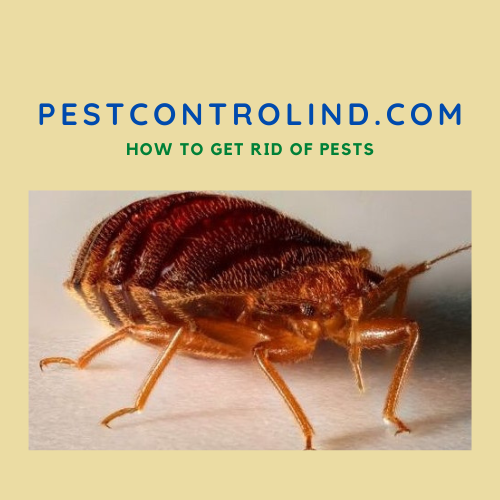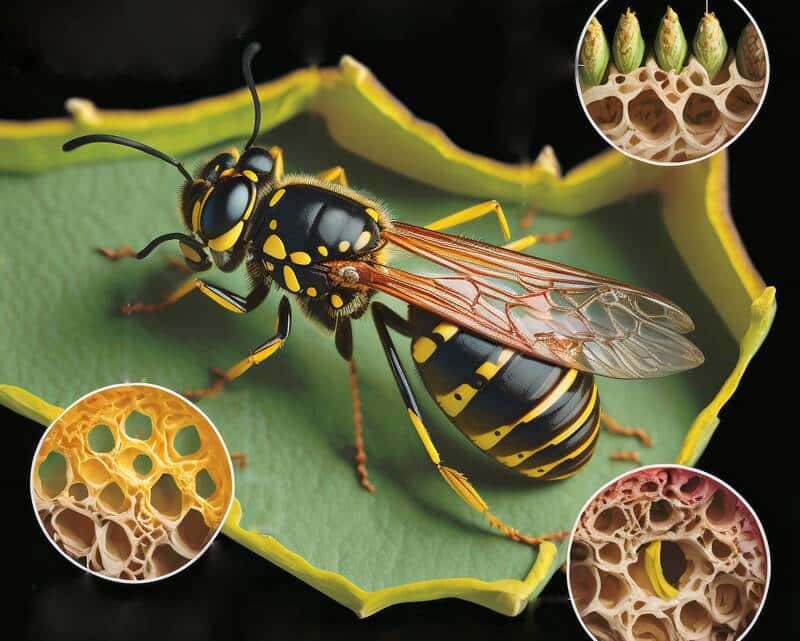What is the lifespan of a wasp? How long does it live in each of its transformation states? Which elements of the colony live more days than the others: male, queen, or worker?
Here is a detailed article on the question.
I. Description of a wasp
The wasp or Vespidae is a common name for several insects of the Hymenoptera branch. Only ants and bees are not wasps although they belong to the order Hymenoptera.
The wasps are divided into three superfamilies: The burrowing wasps, the pompiles, and the mason wasps.
These wasps, all of them, are not social insects. However, in the family Sphecidae, there are some wasps that are solitary hunters.
Two pairs of membranous wings and a sting that can be transformed to inject venom, this is what particularly characterize wasps.
Depending on the species, branch, and family, the morphological characteristics may vary. But these two elements are common to all wasps.
II. Different species of wasps
The social wasp: This one is easily distinguished by the presence of yellow and black bands that cover its body.
Much less imposing than a bee, it glides through the air with a finer appearance. These wasps feed more on sweet fruits, also hunting insects to provide protein for their larvae.
Regarding nest protection, social wasps are very aggressive and willing to do anything to preserve their home.
Solitary wasps are larger than social wasps and have black bodies and yellow legs.
The mason wasps are the best known of this species. This category of wasp is not aggressive.
III. The Fascinating Life Span of Wasps: How Long Do They Live?
The wasp like most insects goes through several intermediate states between the egg state and the imago through the multiple larval transformations. Here is the life span of a wasp in each of these states.
the life span of a wasp
What is the lifespan of a wasp? How long does it live in each of its transformation states? Which elements of the colony live more days than the others: male, queen, or worker?
Here is a detailed article on the question.
1. Life cycle (eggs and larvae)
The life cycle of wasps begins with the laying of an egg. This egg must be laid in the spring in a nest. It takes between 5 to 8 days for an egg to hatch into a larva that needs to be fed.
This can be the primary nest for the first eggs of the first generation, or the final nest for the eggs of other generations.
In wasps, the development time from egg to imago is 30 days for the first workers and this gradually decreases with time.
When the development of the larva is completed, it weaves an operculum around it for nearly 72 hours.
It will then isolate itself completely and indicate to the imagos its change of stage. Several days, about fifteen will collapse.
It is only afterward that the adult imago will tear the fabric of itself, thus letting one perceive a young fragile hornet. It will take a little time so that it takes completely the use of its physical faculties.
2. The worker
Mid-spring is the period that characterizes the laying of the first wave of sterile workers. Each one of them is warm in its cell, they are born in the heart of the primary nest entirely built by the founding queen.
Once the egg is laid, it can take 5 to 8 days of growth for the egg to give way to the larva.
The larva will go through five stages of growth to finally reach its mature stage, that of a worker. But this stage can easily take between two weeks and a month depending on the species and the external conditions.
Hard work is the major characteristic of workers. And despite their dynamism, their life expectancy is around 22 days.
3. The male
The males are born several months after the workers, in the fall. In her laying of sexed females, the founding queen also lays the sexed males whose only function is to mate with the sexed females.
The male plays only a minimal role in the perpetuation of the species, but a role that is no less crucial. It is outside the walls that they will carry out their mating, before the arrival of winter.
Like the whole colony, queen and workers, the males will not survive the cold but will have ensured the survival of the species through the reproductive females.
Their life expectancy is not very long, this is explained by a late birth and a quick death. They manage at least live for about 6 weeks.
4. The Queen
The queen has a much longer life expectancy than the rest of her colony. She is born as a reproductive female in the fall of the previous year, at the same time as the reproductive males.
Once born, they mate with the males and seek protection from the winter cold. Thus, they already go through two seasons.
She will then find a nest and a colony that will go through two more seasons, before falling once more into winter.
The life expectancy of the queen is one year on average.

